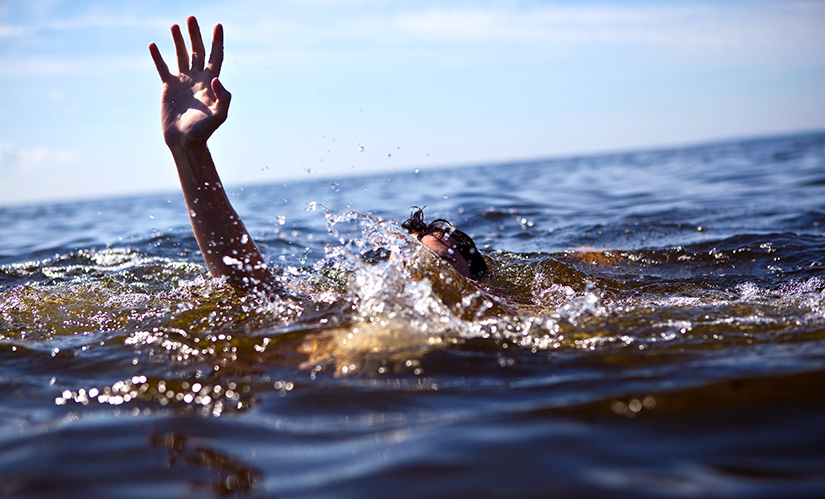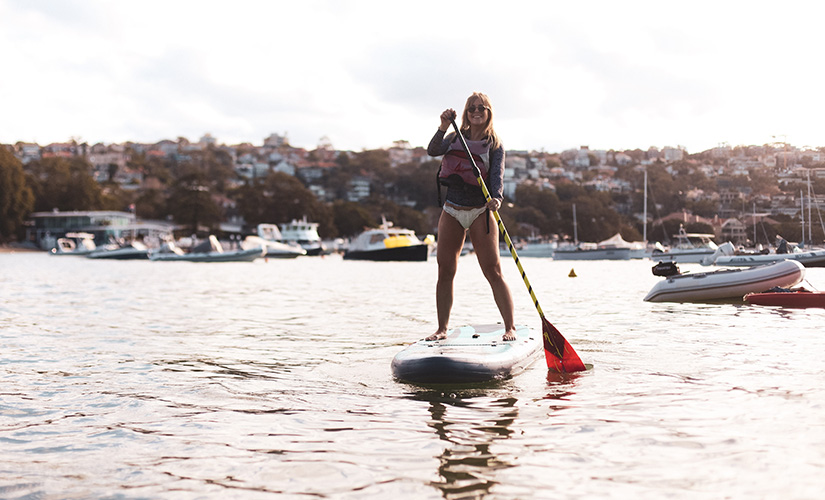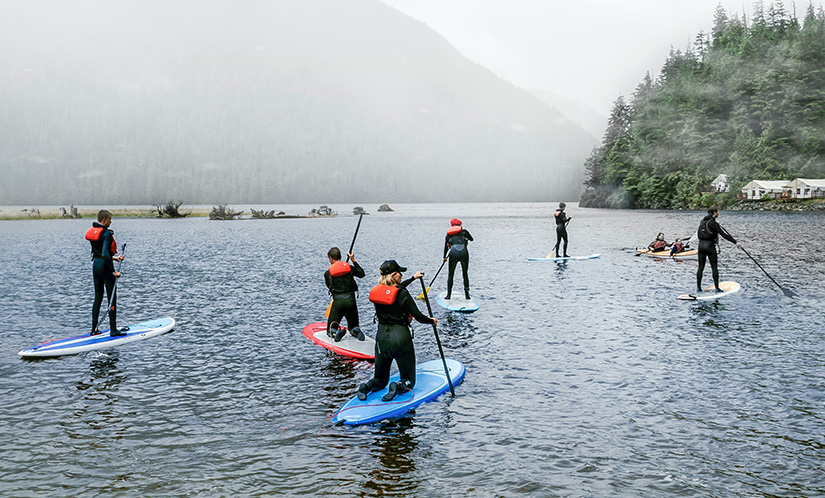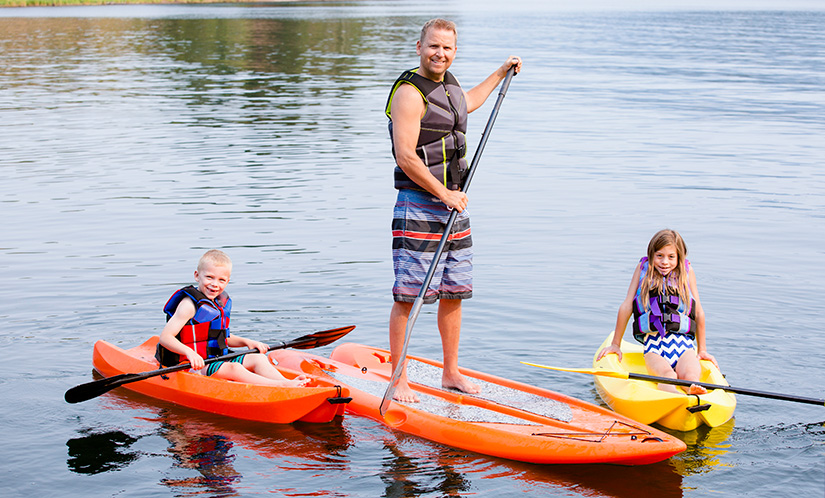Every paddling expert will tell you that you must always wear a life jacket while doing paddle sports. The law also dictates that you must have a USCG-approved life jacket on your SUP board or kayak at all times.
Kids aged 13 and below are required to wear a life jacket while on a SUP board or kayak.
The main purpose of a life jacket or a life vest is to prevent you from drowning. When you fall into the water it will keep you afloat until help arrives or you get back to safety.
But does it always work? Can you drown with a life jacket? The short answer is, yes, you can drown with a life jacket. But it’s not that simple and life jackets are still the best way to prevent drowning.
Let’s dive into the details.
Key Takeaways
- You can drown with a life jacket, but it’s unlikely and wearing one significantly reduces your chances of drowning.
- Some situations where a life jacket may not be enough include cold shock, hypothermia, unconsciousness, flush drowning, and underwater entrapment.
- You should always wear a well-fitting and USCG-approved life jacket and inspect it for any damage before using it.
- You should dress for immersion and avoid alcohol when paddling in cold water temperatures.
- You should paddle with friends or in a group so you can help each other in case of an emergency.
Is Wearing a Life Jacket Enough?
Drowning is the leading cause of death in accidents involving recreational boats.
According to the 2021 US Coast Guard recreational boating statistics, there were 489 cases of drownings that year alone! From that number, 84 of the drowning victims were wearing a life jacket, 399 were not wearing one, and it’s not known whether the other six had a life jacket on.
So from this data, you can see that sometimes, a life jacket may not be enough to prevent you from drowning. It clearly wasn’t enough in 17% of the cases. However, note that the number of deaths is significantly higher, over 81%, for those who didn’t have a life jacket.
But 84 is still not a small number as far as human lives go.
So, when is a life jacket not enough?
Why Someone Might Drown Even with a Life Jacket
While all of the data shows that wearing a life jacket will help to preserve life in the event someone ends up in the water, they still aren’t effective 100% of the time.
In some cases, a person may still drown even while wearing a life jacket. It’s important that you understand why, so let’s take a look at some of the reasons.
Cold Shock and Hypothermia
Paddling in cold temperatures is risky if you’re not dressed for immersion.
When you fall into cold water, your skin temperature suddenly drops. You start hyperventilating and if the water is too cold you may start gasping for air. These involuntary reactions can lead to inhalation of water. At this point, you can’t hold your breath for long.
A good life jacket could help keep your head above the water. But if there are high and frequent waves washing over your face, you’ll still inhale water.
The longer you find yourself in this situation, the less able you’ll be to save yourself. Fatigue sets in quickly, and it even becomes harder for you to swim, as well as take in air.
If you don’t get help within about 30 minutes, hypothermia can start to set in. This could lead to unconsciousness and, eventually, death.
So even with a life vest, cold shock and hypothermia pose a serious threat when paddling in ice-cold water.
Use of Ill-Fitting or Faulty Life Jackets
Another reason why someone may drown even with a life jacket is if they are wearing a faulty life jacket or wearing one improperly.
It’s not uncommon for life jackets to get worn out over time. With inflatable life jackets, the material will degrade as time goes by, just as with anything else. Repeated use will eventually take its toll on the bladder, straps, buckles, reflective strips, and other parts.
This is why you should always conduct a thorough inspection of your life jacket every time you take to the water. A faulty inflatable life vest could have a loose cartridge, a leaking bladder, or any other issue. It is likely to fail you when you need it the most.
Foam life vests are less complicated but they can fail if faulty too. Cuts and tears in the material and UV damage can reduce the buoyancy of your life jacket, meaning it may not be able to keep you afloat and prevent drowning.
Someone can also drown while wearing an ill-fitting personal floatation device. For instance, if your life jacket is too big it can slip off in rough conditions, and then it won’t be of much help.
Extreme Water Conditions (Can Cause ‘Flush Drowning’)
It’s possible to drown while wearing a life vest if you’re caught up in extreme water conditions.
Take the example of someone in a swollen river or class III to V rapids. Even with a life jacket, they will begin to swallow water due to the turbulent water and waves constantly washing over them.
The more water they swallow, the weaker they get and the lower their chances of survival. This is known as flush drowning.
According to these statistics, flush drowning is extremely common. It’s more common among advanced and intermediate paddlers in extreme conditions. In these situations, it’s the leading cause of fatalities, not the lack of proper personal floatation devices!
When a Paddler is Unconscious or Severely Injured
When someone gets injured or knocked unconscious, they may not be able to turn their face up. So even though your life jacket is keeping you afloat, you could still drown if your face is down and you’re inhaling water.
Some life jackets are designed to turn your face up if you lose consciousness. However, an unconscious person can’t help themselves when waves are washing over their nose and mouth.
This is referred to as mouth immersions. If the waves are frequent and forceful they could lead to drowning.
Being Trapped Underwater
A case of drowning while wearing a life jacket can also happen if you get trapped under the water. And you don’t even have to be trapped for a long time.
Even less than a minute of underwater entrapment is enough for the situation to end fatally. It’s even worse if you start panicking.
When you’re trapped by underwater debris or rocks you may have a hard time overcoming current forces trying to hold you underwater, even with a life vest. Depending on how much access you have to air, the situation could go south really fast.
Life Jackets Are Still the Best Way to Prevent Drowning
Looking at the above possible scenarios, you may start to think that personal flotation devices are almost useless. But that’s not true.
Going back to the recreational boating accidents data, you’ll see that 81% of the drowning victims did not have a life jacket. So while there are instances where a life jacket may not help, wearing life jackets remains the best way to prevent drownings.
They will increase your chances of survival significantly.
How to Lower the Risk of Drowning While Wearing a Life Jacket
Out of all this, the good news is that there are ways to reduce drowning risks while wearing a life vest. So, better to be safe than sorry – let’s take a look at some of the things you can do
Find the Right Size and Wear It Properly
Ill-fitting life jackets won’t offer much help in tricky situations. Take your time while buying your life jacket and consider the fact that it could save your life.
First, make sure you pick the right size. Life jackets are supposed to fit snugly, not too loose and not too tight.
It’s also important to wear life jackets properly. If you have one on and don’t even bother to zip it up or buckle it properly, then it won’t work well when you need it.
If possible, visit a local outfitter so they can help you pick the right life jacket for your size and the water sports you will be doing.
Another thing, make sure your life jacket is US Coast guard approved. Approved life jackets have a USCG seal on them somewhere.
Keep Your Life Jacket in Good Condition
A life jacket, just like every other gear, needs maintenance to keep it working well, especially inflatable jackets.
Always inspect your life vest carefully each time before wearing it. Look for visible tears and other visual signs of damage. If it’s worn out, don’t risk your life by wearing it because water and weather conditions can be unpredictable.
If you own an inflatable life vest, inflate it and leave it overnight every once in a while. This will let you know whether or not it’s still working properly.
Dress Appropriately for the Temperature
When paddling in cold water temperatures, the chances of something going wrong increase. On top of everything else, you have to worry about cold shock and hypothermia.
The right life jacket can prevent you from drowning but it offers little to no protection from the cold. Layer up properly and dress for immersion. Wear clothes that will conserve your body warmth should you end up in the water.
Hypothermic conditions will quickly cause you to lose control and interfere with your swimming ability. In a short period of time, you’ll be unable to do anything to save yourself.
Even though you’re a strong swimmer, dress for the water temperature in addition to wearing a well-fitting life vest.
Don’t Drink and Paddle!
Alcohol is one of the top 10 contributing factors to recreational boating accidents.
Drinking interferes with your judgment, something that could be very dangerous when you’re in the water. You need to be sober and alert because you may need to make quick decisions when you’re in real danger.
It’s easy to be reckless when you’re drunk and you may put yourself in a situation where even a life jacket can’t help you.
Don’t Paddle Alone
Many paddlers like to go on solo adventures but it helps to have a friend.
For instance, you have seen that someone could drown even with a life jacket on if they’re injured or unconscious. And if you’re alone you won’t even be able to call for help.
But if you’re with a group of other (experienced) paddlers, they will be able to get you the help you need. This is even more important if you’re going to a remote area where it may take time for someone to find you.
Frequently Asked Questions
Do Life Jackets Stop You from Drowning?
Yes, the right life jacket will significantly reduce your chances of drowning. Although there are instances where drowning with a life jacket is possible, you’re better off wearing it than not wearing one at all.
What Are the Chances of Drowning with a Life Jacket?
From the 2021 recreational boating statistics, we see that 81% of the drowning victims were not wearing a life jacket. Only 17% of those who drowned were wearing a life vest. So your chances of drowning are much higher without a personal floatation device.
Will a Life Jacket Keep You Afloat If You Can’t Swim?
Yes, a life jacket will keep you afloat even if you can’t swim. However, inflatable life jackets are not recommended for poor swimmers or non-swimmers.
How Long Can You Stay Afloat with a Life Jacket?
A life jacket can keep you afloat until you get help. But it also depends on the water temperatures and the other situations we have discussed above.
Will a Life Jacket Flip You Over?
It depends on the type of life jacket you have. A Type I PFD will turn an unconscious wearer’s face up and some Type II PFDs can do that too. Other PFD types won’t.
Will a Life Jacket Save Your Life?
Yes, a life jacket can save your life.
Life vests are the best way to prevent drowning fatalities. Most of the drowning victims in recreational boating accidents were not wearing their life jackets at the time of the accident. A life jacket significantly reduces your chances of drowning and in most instances, it will save your life.
Wrapping Up
Can you drown with a life jacket? Yes, it is possible to drown with a life jacket but it’s unlikely.
There are times when a life vest may not be enough. Some examples include when you’re knocked unconscious and your face is down. Other times a paddler may be trapped underwater and unable to fight water forces.
Even with a life jacket on, in some rough conditions water will wash over your face causing you to inhale water. Drowning with a PFD on is also possible in case of cold shock and hypothermia. Then there’s the issue of faulty or ill-fitting life jackets.
But some of these situations are avoidable. When paddling in cold temperatures, dress appropriately for the temperature to prevent hypothermic conditions. Wear your life jacket properly and make sure it’s in good condition.
It’s always a good idea to go with friends so you can help one another if things start to go wrong.




